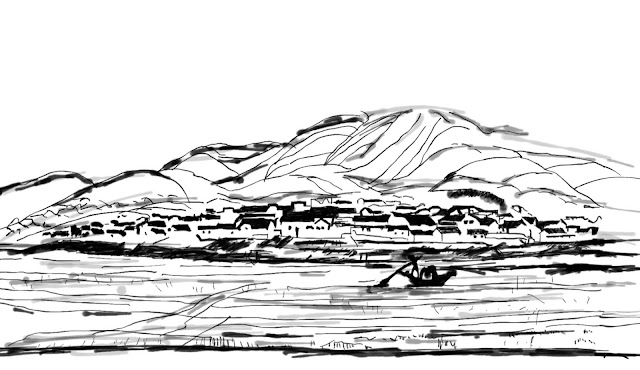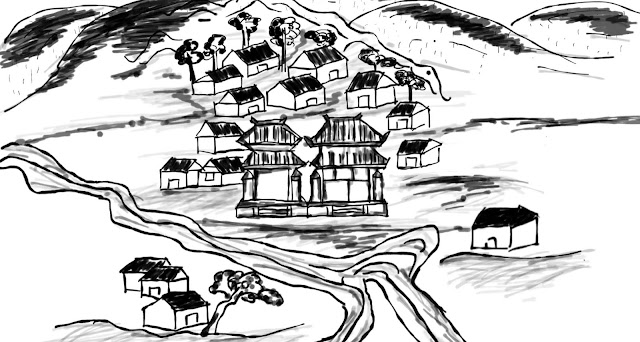The Image of the City by Kevin Lynch,
Artwork by Meng Jimin
The landmark buildings mentioned by Kevin Lynch have different meanings in Chinese villages. The whole village is composed of a large house in the center and many small houses around. The doors of the small houses are opened to the big houses. This kind of centripetal and cohesive settlement space is obviously to obtain the overall defense advantage with the help of clan blood force. This form of organizing architectural complex around a central space (inner courtyard) makes Chinese traditional settlements dominated by this idea from the beginning to the end. According to Kevin Lynch's research on urban image, I applied it to the study of Chinese villages. For the images of Chinese villages, more attention is paid to ecological images. Most of the ancient Chinese villages have the characteristics of pillow mountains and water, facing south, deep soil layer and lush vegetation, which have significant ecological value.Sitting in the north and facing the south, it is not only conducive to Chinese village houses located in the northern hemisphere to get good sunshine, but also conducive to the growth of crops on the southern slope; deep soil layer is conducive to cultivation and plant growth; good vegetation is conducive to water conservation, soil and water conservation, but also conducive to regulating the microclimate and enriching the village landscape, as well as providing necessary firewood for villagers' life. In a word, the environment of most ancient villages in China shows distinct ecological images



Comments